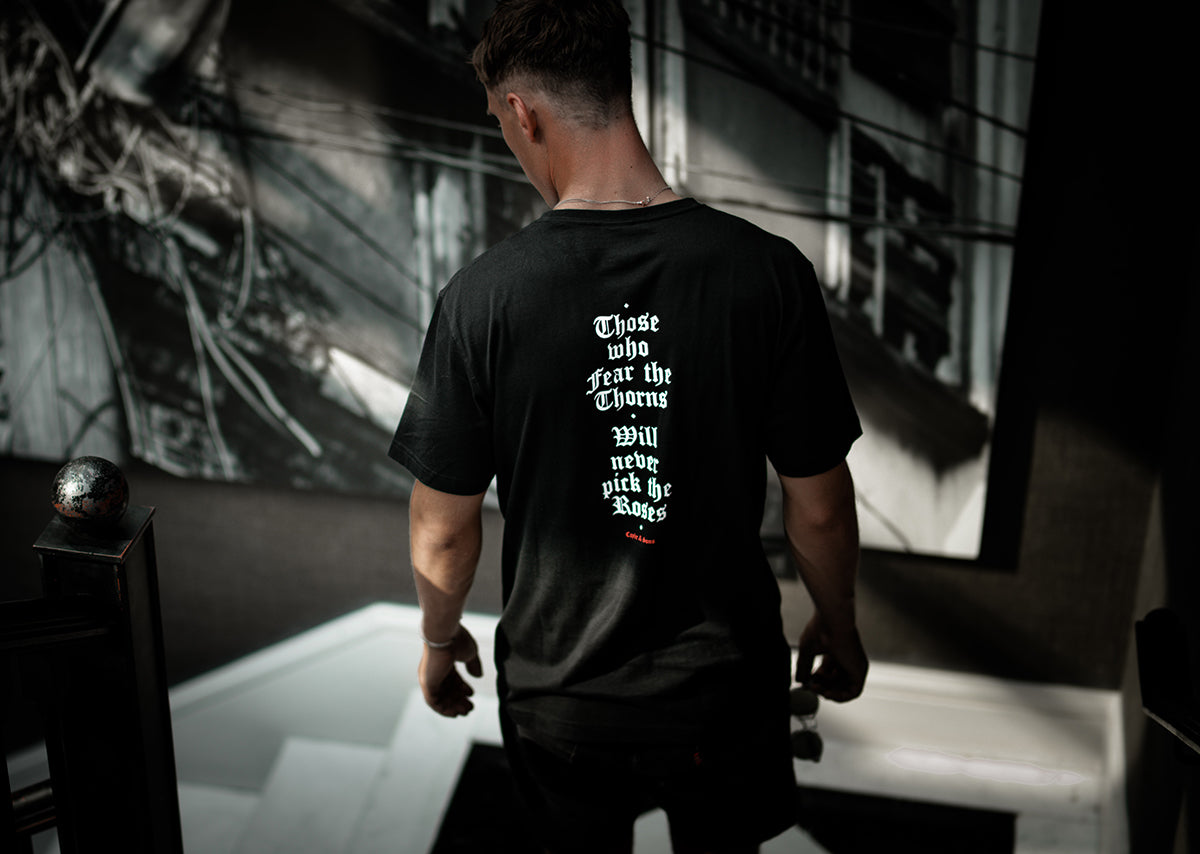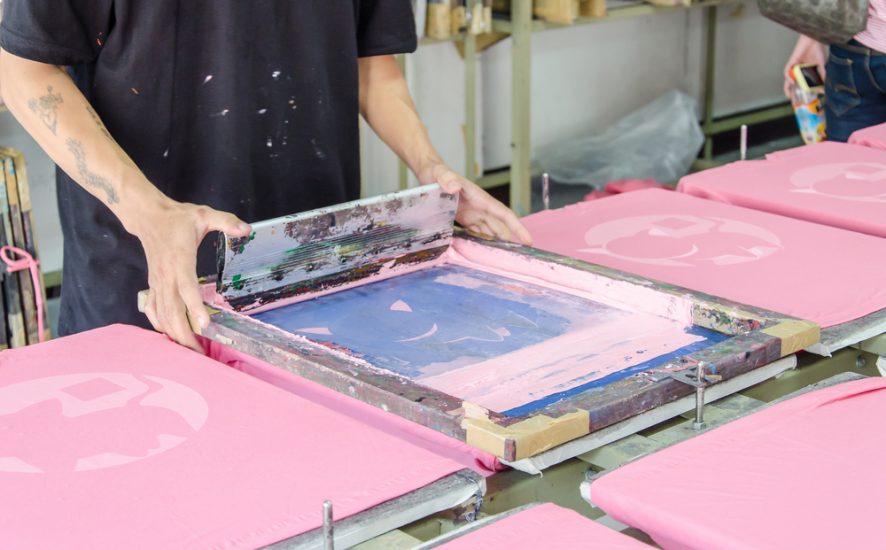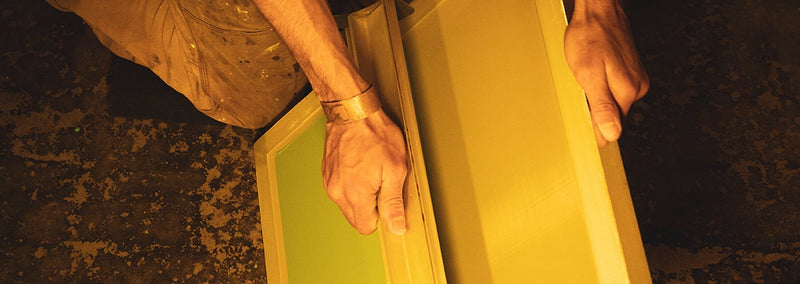6 Easy Facts About Tx Tees Explained
6 Easy Facts About Tx Tees Explained
Blog Article
Facts About Tx Tees Uncovered
Table of ContentsOur Tx Tees IdeasTx Tees Can Be Fun For EveryoneTx Tees Fundamentals ExplainedTx Tees Can Be Fun For AnyoneTx Tees Fundamentals ExplainedNot known Facts About Tx TeesThe Only Guide for Tx Tees
That brings your total to about $1,900 before tax obligation and shipping. Build up other costs, like the number of utilities it takes to run the shop and the price of ink and emulsion per design. embroidery shop. Take the print listed below. This is a one-color image, so the price of ink per t shirt is about 20 cents.The emulsion ought to just be a few cents considering that you 'd only need to coat one screen for this job. Normally, printers try to make up to 45% earnings on a print task.

With DTF, you can print a handful of shirts, or just one. Make use of the same calculator as the area over to calculate just how much profit you 'd use DTF transfers. Compare the expenses and revenues to whichever method speaks finest to your setup and procedure. Both display printing and DTF have their particular niches in the globe.
Tx Tees Things To Know Before You Get This
The most effective method to recognize? Ask about and see what printing shop like your own are doing. embroidery shop. Attempt both out and see which you like far better
When you're choosing what kind of printing method to make use of for printing your artwork styles on your garments, it is necessary that you recognize the differences in between these two strategies so you can take full advantage of results while reducing expenses. Screen printing is the most commonly used strategy for printing layouts on textiles.
DTG printing is also referred to as place or direct to garment printing due to the fact that it publishes just what is required rather than making a screen as display printers do. https://www.cheaperseeker.com/u/txtees02. Display printing works by screen filler squeegee screen printing ink display mesh display, then transferring the photo to garment utilizing warm and/or stress
The DTG printer uses unique dye-sublimation inks that are used right into a pre-designed picture by an electronic printing system. The inks become part of the fabric, permitting vivid colors and phenomenal information. It's likewise recognized as area or direct to garment printing due to the fact that it prints only what is needed instead of making a display as screen printers do.
Tx Tees - The Facts
It's much faster - you can print a fullcolor photo in minutes, as opposed to hours for screen printing. Second, there's no set up time or costs involved - you can publish any design you like, without having to produce a screen initially. Third, there's no waste - because display printers screen print one design at once, they need to screen each shade independently.
The paper is extremely expensive and can only be made use of when. Once it's published on, it has actually to be disposed of. - The first acquisition rate is less than the ahead of time investment of DTG printers- You can print multi-color designs one display at a time rather than needing to publish each color independently like DTG printing.

What Does Tx Tees Do?
Instead of using screen mesh as display printers do, color sublimation printers use laser technology to transfer your images onto garments or paper. A warmth procedure moves the color from its solid-state straight into the gas stage which in turn integrates it onto textile substrates when they are quickly warmed to high temperatures under high stress.
Sublimation printing is eco-friendly. It utilizes less water than screenprinting, and because it does not include using harmful solvents, it's risk-free for all types of apparel. The color sublimation inks are also odorless when treated, unlike display printers that use harmful chemicals throughout the display printing procedure that leave behind an undesirable smell.
They likewise conserve money on expensive equipment like exposure units given that color sublimation printers do not need a UV exposure system or a flash treatment oven that is normally utilized in screen printing (screen printer). What is direct to garment printing (DTG Printing)? DTG printing is an electronic screenprinting process that publishes directly onto material utilizing specialized inkjet printers
The Main Principles Of Tx Tees
DTG printing offers many benefits over typical screenprinting, consisting of the capability to publish photographic high quality pictures, greater color vibrancy, and the ability to publish styles on darker fabrics. DTG printers function by heating the textile ink till it becomes a gas. The gas after that permeates the textile, bonding with the fibers to produce a long-term print.

Display printers simply prepare their display then begin printing until they lack item or ink.- There is a large array of knowledgeable screen printers throughout the globe, which can be useful for novices. - It's a slower procedure - display printers typically have to wait for the ink to dry prior to they can print the following color- Display printers need hand-operated labor, so there's a greater discovering curve and it takes longer to produce a top notch layout- Screen printing isn't as precise as DTG printing, so you may obtain some "blood loss" of shades from one component of the picture onto one more otherwise done effectively.
How Tx Tees can Save You Time, Stress, and Money.
Instead of using screen mesh as display printers do, dye sublimation printers make use of laser technology to transfer your pictures onto garments or paper. A heat process moves the dye from its solid-state directly right into the gas phase which subsequently integrates it onto fabric substrates when they are quickly heated up to heats under high pressure.
Sublimation printing is eco-friendly. It uses less water than screenprinting, and because it doesn't involve making use of hazardous solvents, it's risk-free for all sorts of apparel. The dye sublimation inks are additionally odor-free when healed, unlike display printers that utilize harmful chemicals throughout the screen printing procedure that leave an undesirable odor.
They also save money on pricey devices like exposure devices considering that color sublimation printers don't require a UV exposure system or a flash cure stove that is typically utilized in screen printing. What is direct to garment printing (DTG Printing)? DTG printing is an electronic screenprinting process that prints straight onto textile using specialized inkjet printers.
The Greatest Guide To Tx Tees
DTG printing provides several benefits over conventional screenprinting, consisting of the capability to print photo top quality pictures, higher shade vibrancy, and the capacity to publish styles on darker fabrics. DTG printers function by heating the textile ink until it develops into a gas. The gas after that penetrates the material, bonding with the fibers to create an irreversible print.
Report this page